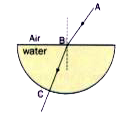By looking at a plant externally can you tell whether a plant is C3orC4 ? Why and how?
To determine whether a plant is a C3 or C4 type by looking at it externally, we can follow these steps:
1. Understanding C3 and C4 Plants:
- C3 plants use the Calvin cycle for photosynthesis, where carbon dioxide is fixed into a three-carbon compound (3-phosphoglycerate).
- C4 plants have a different mechanism where carbon dioxide is initially fixed into a four-carbon compound (oxaloacetate) before entering the Calvin cycle.
2. External Morphology:
- When observing a plant externally, we look at its general features such as leaf shape, size, and color.
- However, these external characteristics do not provide definitive information about whether a plant is C3 or C4.
3. Adaptation to Environment:
- C4 plants are typically found in dry, hot environments and have adaptations that help them conserve water.
- C3 plants are more common in cooler, wetter climates.
4. Leaf Anatomy:
- C4 plants have a unique leaf anatomy known as Kranz anatomy, which includes specialized bundle sheath cells that surround the vascular bundles.
- This anatomical feature can only be observed under a microscope, not externally.
5. Conclusion:
- Therefore, by looking at a plant externally, you cannot definitively tell if it is a C3 or C4 plant. The differences between these two types of plants are primarily at the cellular and anatomical levels, which are not visible without further examination.
Final Answer:
No, you cannot tell whether a plant is C3 or C4 just by looking at it externally because the distinguishing features are at the microscopic level and involve specific anatomical adaptations that are not visible without detailed observation.
- C3 plants use the Calvin cycle for photosynthesis, where carbon dioxide is fixed into a three-carbon compound (3-phosphoglycerate).
- C4 plants have a different mechanism where carbon dioxide is initially fixed into a four-carbon compound (oxaloacetate) before entering the Calvin cycle.
- When observing a plant externally, we look at its general features such as leaf shape, size, and color.
- However, these external characteristics do not provide definitive information about whether a plant is C3 or C4.
- C4 plants are typically found in dry, hot environments and have adaptations that help them conserve water.
- C3 plants are more common in cooler, wetter climates.
- C4 plants have a unique leaf anatomy known as Kranz anatomy, which includes specialized bundle sheath cells that surround the vascular bundles.
- This anatomical feature can only be observed under a microscope, not externally.
- Therefore, by looking at a plant externally, you cannot definitively tell if it is a C3 or C4 plant. The differences between these two types of plants are primarily at the cellular and anatomical levels, which are not visible without further examination.
No, you cannot tell whether a plant is C3 or C4 just by looking at it externally because the distinguishing features are at the microscopic level and involve specific anatomical adaptations that are not visible without detailed observation.
Topper's Solved these Questions
Similar Questions
By looking at a plant externally can you tell whether a plant isC3orC4? When and how ?
View SolutionBy looking at which internal structure of a plant can you tell whether a plant is C3orC4 ? Explain.
View SolutionBy looking at which internal structure of a plant can you tell whether a plant is C3orC4 ? Explain.
View SolutionIn C4 plants ,
View SolutionIn Fig. A, can you tell why there is no refraction at C.

View SolutionC3 plants and C4 plants
View SolutionIn which plants C3orC4 plants, does photorespiration occur?
View SolutionPlants showing C4 pathway are better than the C3 plants in
View SolutionWhich of the following plants is not C4 - plant ?
View SolutionWhat are the common steps in the dark · reaction of C3andC4 plants ?
View Solution
